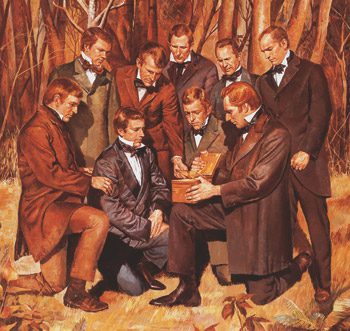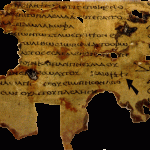
Larry E. Morris opened the Thursday afternoon session with a very important discussion of “The Eight Witnesses.” I haven’t seen Larry since he departed his position as an editor with the Maxwell Institute in order to take up editorial work with the Joseph Smith Papers project, so it was good to see him again. However, he has been enviably prolific since then, even though Amazon.com has unfortunately mingled his work with that of another author bearing the name of Larry Morris:
https://www.amazon.com/s?k=Larry+E.+Morris&i=stripbooks&page=2&qid=1565292191&ref=sr_pg_2
I look forward very much to seeing Larry’s presentation up online. It is, for one thing, an excellent compilation of historical quotations from the Witnesses and from those who knew and heard them. As he pointed out, it is extremely difficult, after reading the Witnesses’ own statements, to conclude that their experience with the plates was not empirical and real.
Next, Ben Spackman devoted his remarks to “A Paradoxical Preservation of Faith: LDS Creation Accounts and the Composite Nature of Revelation.” Overall, and not merely in his presentation to the 2019 FairMormon Conference, he is taking a very thoughtful approach to the question of how to reconcile evolutionary biological science with a faithful understanding of scripture, and what he is coming up with is very much worthy of attention. Part of what he did this afternoon involved a close reading of the three Latter-day Saint creation texts — in Genesis, Moses, and Abraham — that are available to the public. He argued for a recognition of the human element in the reception and recording of relevation as scripture while at the same time retaining belief in revelation.
Of course, the high point of his presentation was when he displayed this image on the screens:

Few American theologies are more complex than that of the Church of Jesus Christ of Latter-day Saints, but its flagship Brigham Young University teaches off-the-shelf, industry-standard evolution. That has been the case since 1931, when the church officially said: “Leave biology, archaeology, and anthropology, no one of which has to do with the salvation of the souls of mankind, to scientific research.” . . . What the church requires is only belief “that Adam was the first man of what we would call the human race,” says Gordon Hinckley, the church’s living prophet. Scientists can speculate on the rest, he says, recalling his own study of anthropology and geology: “Studied all about it. Didn’t worry me then. Doesn’t worry me now.”
Larry A. Witham, Where Darwin Meets the Bible (Oxford and New York: Oxford University Press, 2002), 176-177.










